Explore the best AI sales tools for automating outreach, lead scoring, and closing deals. Save time, sell smarter, and scale your sales pipeline.
Sales is no longer just about hustle—it’s about smart tech and AI doing the heavy lifting.
In today’s fast-paced digital economy, artificial intelligence is transforming every corner of the sales cycle. From identifying promising leads to automating follow-ups and forecasting deals, AI has quickly become a critical asset for modern sales teams.
Gone are the days of relying solely on gut instinct and manual processes. AI-powered sales tools are now capable of analyzing vast amounts of data, providing actionable insights, and enhancing team productivity at every stage of the buyer journey.
By integrating AI into your sales process, you can:
- Increase win rates with smarter lead targeting
- Shorten sales cycles through automation
- Deliver personalized experiences at scale
- Improve forecasting accuracy and pipeline visibility
Whether you’re a sales rep, a startup founder, or a VP of Sales, understanding and leveraging these tools can give your team a measurable competitive advantage.
This article will provide a clear explanation of what AI sales tools are and how they work.
What Are AI Sales Tools?
AI sales tools are software platforms that use artificial intelligence to automate, optimize, and enhance sales tasks and decision-making. These tools use machine learning algorithms, natural language processing (NLP), and predictive analytics to process sales data, surface insights, and assist teams in closing more deals with greater efficiency.
Core Capabilities
Here are the primary functions that define AI sales tools:
- Lead Scoring: Automatically ranks leads based on likelihood to convert using behavioral, demographic, and engagement data.
- Predictive Analytics: Forecasts sales outcomes and deal closures based on historical data and real-time activity.
- Conversational AI: Includes chatbots and email automation that simulate human interaction, qualifying leads and nurturing prospects 24/7.
- CRM Integrations & Workflow Automation: Seamlessly connects with CRMs like Salesforce or HubSpot to automate tasks such as data entry, meeting scheduling, follow-ups, and pipeline updates.
How AI Is Revolutionizing Sales
The adoption of AI in sales goes beyond simple automation—it transforms strategy and execution.
- From Cold Outreach to Personalized Follow-Ups: AI analyzes lead behavior and history to craft highly relevant outreach messages and follow-ups that convert.
- Enhanced Pipeline Visibility: Sales managers get deeper insights into where deals are stuck and which reps need support, powered by real-time analytics.
- Identification of High-Value Prospects: AI tools analyze multiple data points to surface hidden gems in your CRM—leads that show high intent but might otherwise go unnoticed.
Top AI Sales Tools in 2025
Here’s an in-depth analysis of some of the top AI sales tools in 2025, detailing their features, pricing, ideal use cases, and the pros and cons of each:
1. Salesforce
Features:
- AI-Powered CRM: Salesforce integrates artificial intelligence into its Customer Relationship Management system to automate tasks, provide predictive analytics, and enhance customer interactions.
- Einstein AI: Offers insights into sales forecasts, opportunity scoring, and personalized email recommendations.
- Workflow Automation: Streamlines repetitive tasks, allowing sales teams to focus on high-value activities.
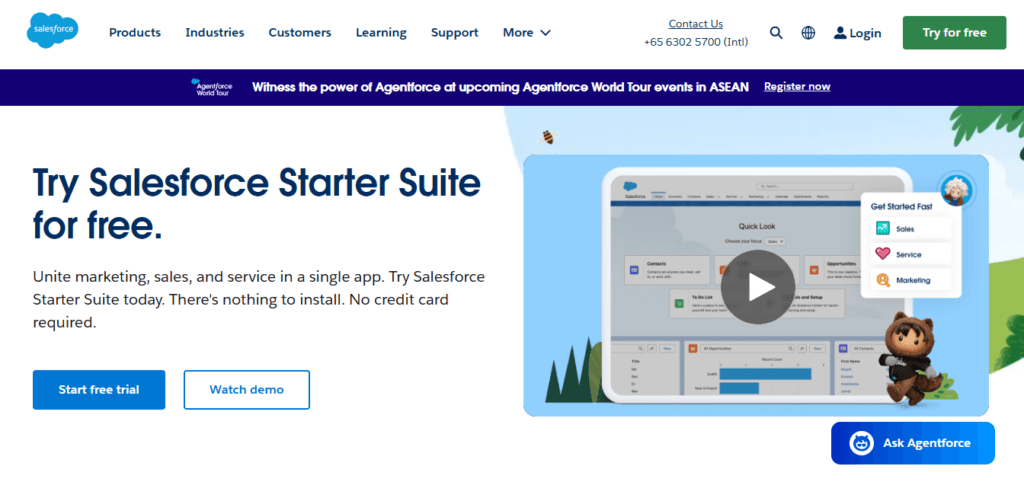
Pricing:
- Pricing varies based on the selected plan and business size; specific details are available upon request.
Ideal Use Case:
- Businesses of all sizes seeking a comprehensive CRM solution with integrated AI capabilities to enhance sales performance and customer relationships.
Pros:
- Robust integration capabilities with various third-party applications.
- Extensive customization options to tailor the platform to specific business needs.
- Comprehensive support and a vast user community.
Cons:
- Can be complex to set up and may require dedicated personnel for management.
- Higher cost compared to some other CRM solutions, which might be a consideration for small businesses.
Best Use For & How:
- Best For: Organizations aiming for a scalable CRM with advanced AI features to drive sales growth.
- How to Use: Implement Salesforce to centralize customer data, utilize AI-driven insights for sales forecasting, and automate routine tasks to improve efficiency.
2. Gong.io
Features:
- Revenue Intelligence Platform: Analyzes sales calls, meetings, and emails to provide actionable insights.
- Conversation Analytics: Evaluates communication patterns to identify successful tactics and areas for improvement.
- Deal and Pipeline Tracking: Offers visibility into deal progress and potential risks.
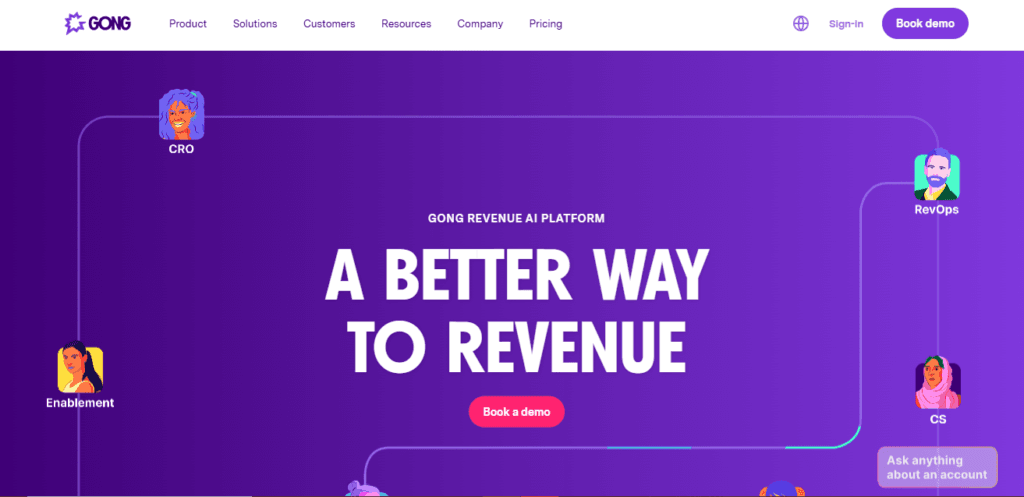
Pricing:
- Custom pricing based on team size and requirements; details are available upon request.
Ideal Use Case:
- Sales teams looking to enhance their communication strategies and gain deeper insights into customer interactions to close deals more effectively.
Pros:
- Provides detailed analytics on sales interactions.
- Helps in identifying coaching opportunities for sales representatives.
- Integrates with various CRM systems for seamless data flow.
Cons:
- May require time to fully integrate and train staff on its functionalities.
- The depth of data provided can be overwhelming without proper training.
Best Use For & How:
- Best For: Medium to large sales teams aiming to improve their sales conversations and strategies.
- How to Use: Utilize Gong.io to record and analyze sales interactions, derive insights for coaching, and refine sales tactics based on data-driven feedback.
3. HubSpot Sales Hub
Features:
- AI-Powered Lead Scoring: Automatically ranks leads based on their likelihood to convert.
- Email Automation: Facilitates personalized email sequences and follow-ups.
- Sales Analytics: Provides dashboards and reports to monitor sales performance.
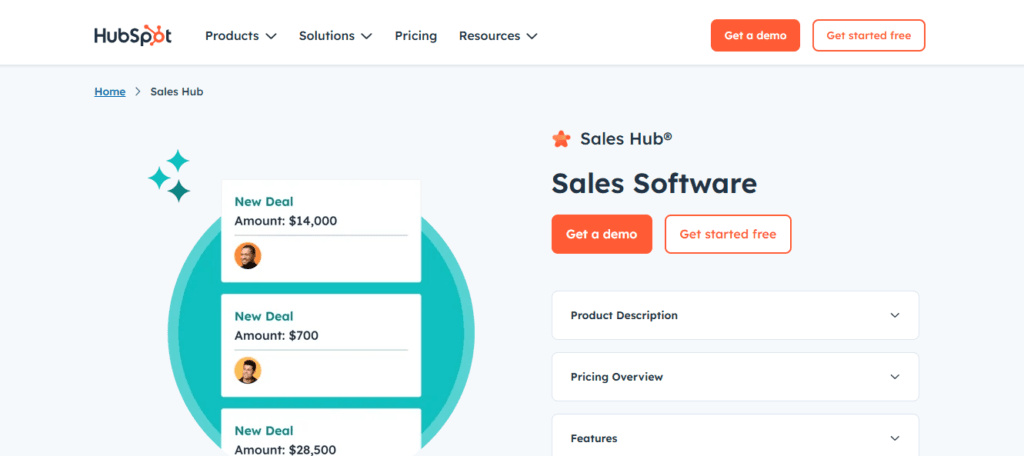
Pricing:
- Offers a free version with basic features; premium plans start at $45/month.
Ideal Use Case:
- Small to medium-sized businesses seeking an intuitive and integrated sales platform with AI capabilities.
Pros:
- User-friendly interface suitable for teams with limited technical expertise.
- Seamless integration with HubSpot’s marketing and service hubs.
- Extensive educational resources and support.
Cons:
- Advanced features may require higher-tier plans.
- Customization options are somewhat limited compared to other platforms.
Best Use For & How:
- Best For: Businesses looking for an all-in-one sales and marketing solution with AI enhancements.
- How to Use: Implement HubSpot Sales Hub to automate lead nurturing, utilize AI for lead prioritization, and gain insights through comprehensive sales analytics.
4. Outreach
Features:
- Sales Engagement Platform: Manages multi-channel outreach efforts.
- AI-Driven Insights: Provides recommendations for improving engagement strategies.
- Pipeline Management: Offers tools to track and manage sales opportunities.
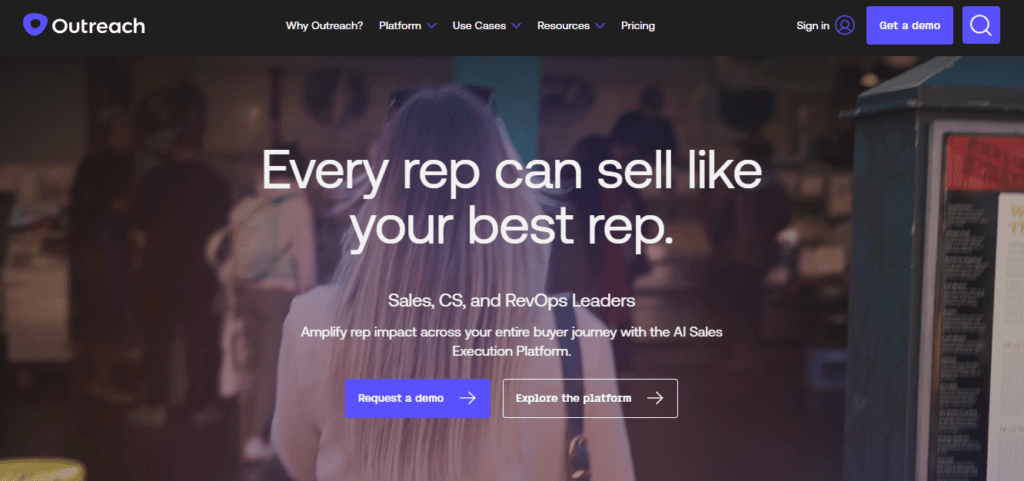
Pricing:
- Custom pricing based on the organization’s needs; details are available upon request.
Ideal Use Case:
- Sales teams aiming to optimize their outreach processes and improve engagement rates through data-driven insights.
Pros:
- Centralizes various outreach channels into a single platform.
- Enhances productivity with automation features.
- Provides analytics to refine sales strategies.
Cons:
- May have a learning curve for new users.
- Integration with certain CRMs can be complex.
Best Use For & How:
- Best For: Organizations focusing on outbound sales and looking to streamline their engagement workflows.
- How to Use: Leverage Outreach to automate communication sequences, utilize AI insights to tailor outreach, and monitor engagement metrics to adjust strategies accordingly.
5. Clari
Features:
- Revenue Operations Platform: Provides insights into sales forecasts and pipeline health.
- AI-Powered Analytics: Predicts revenue outcomes and identifies risk factors.
- Sales Execution Tracking: Monitors sales
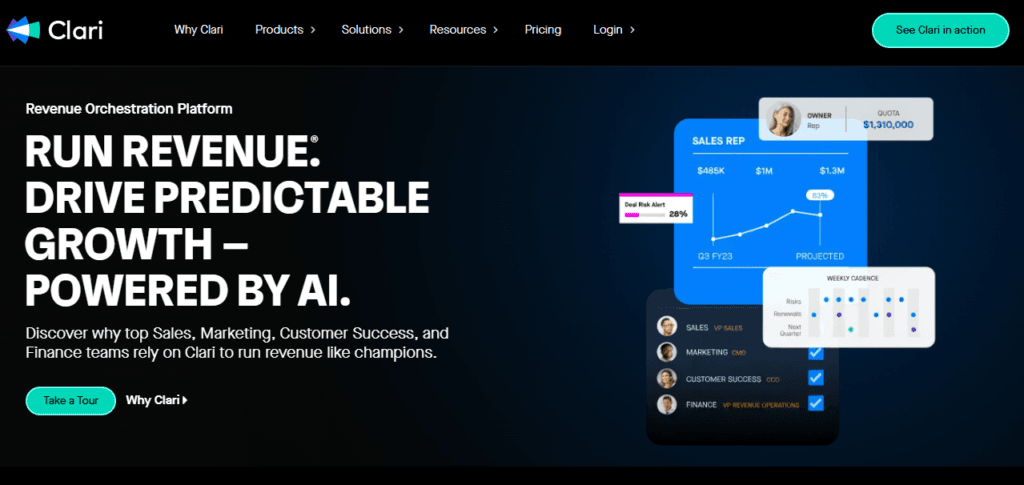
6. Lavender
Features:
- AI-powered email assistant that scores and improves sales emails in real time.
- Provides feedback on subject lines, tone, length, personalization, and clarity.
- Integrates with Gmail, Outlook, and sales platforms like Outreach and Salesloft.
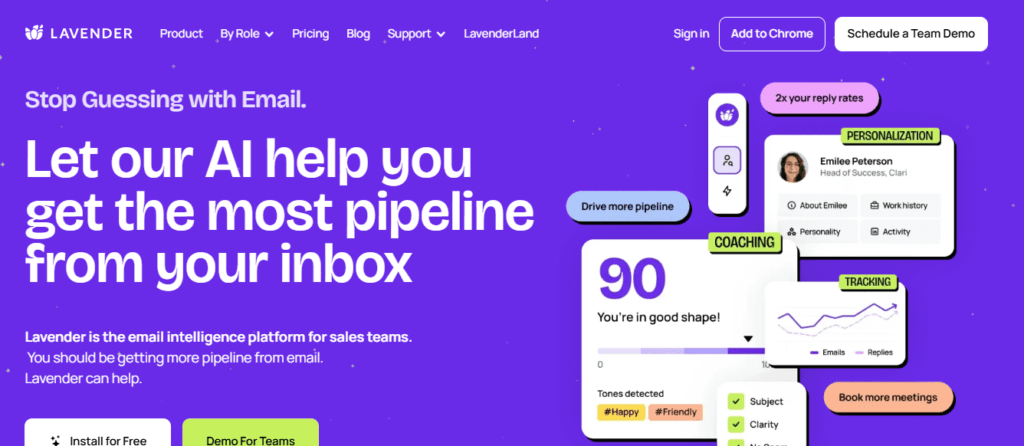
Pricing:
- Free plan available; Pro plan starts at $29/month.
Ideal Use Case:
- Sales reps who send cold emails and want to boost open/reply rates with better messaging.
Pros:
- Real-time, actionable feedback on email drafts.
- Boosts engagement and helps write high-performing outreach copy.
Cons:
- Focuses only on email; not a full CRM or engagement suite.
Best Use & How:
- Use Lavender while drafting sales emails to optimize tone, structure, and relevance — perfect for prospecting campaigns.
7. Copy.ai
Features:
- AI writing assistant tailored for marketing and sales content.
- Generates blog posts, sales emails, social media copy, and ad text.
- Prebuilt sales frameworks (AIDA, PAS) for structured outreach.
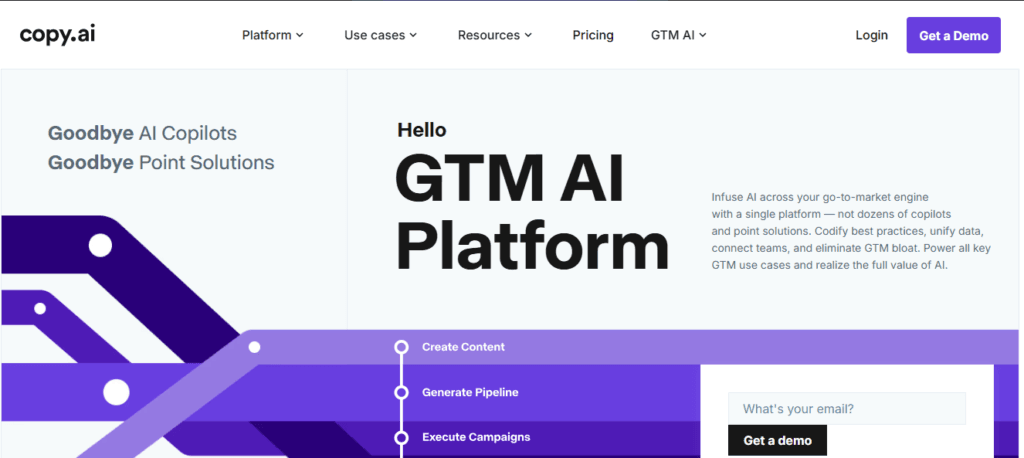
Pricing:
- Free plan available; Pro starts at $49/month.
Ideal Use Case:
- Sales and marketing professionals needing high-quality, conversion-driven content fast.
Pros:
- Saves hours of manual content creation.
- Offers specific templates for various sales scenarios.
Cons:
- May need human editing for brand tone or niche accuracy.
Best Use & How:
- Use Copy.ai to generate initial drafts for cold outreach, sales pages, or follow-up emails, then refine with personal insights.
8. Fireflies.ai
Features:
- AI meeting assistant that records, transcribes, summarizes, and tags meetings.
- Integrates with Zoom, Microsoft Teams, Google Meet, and CRMs.
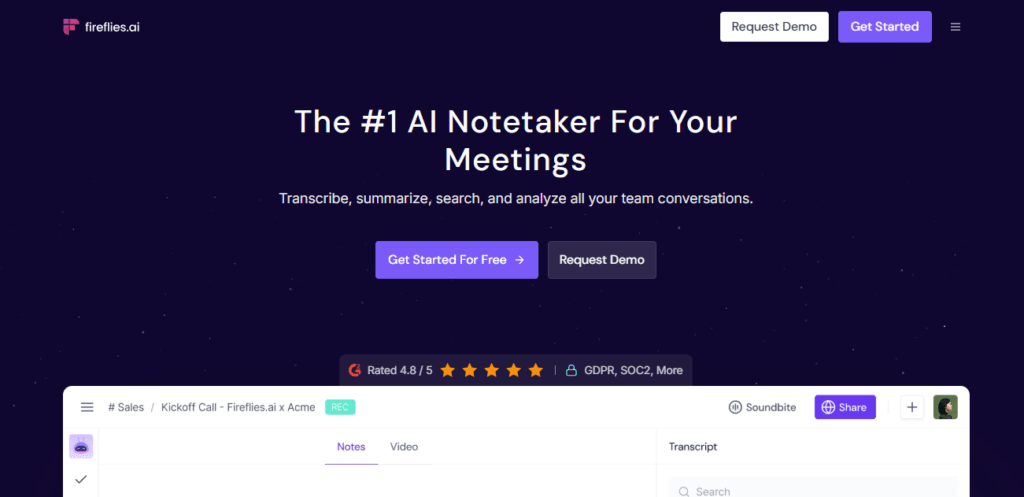
Pricing:
- Free basic plan; Pro starts at $10/user/month.
Ideal Use Case:
- Sales teams wanting to capture conversations and automatically generate action items.
Pros:
- Saves time on note-taking.
- Improves sales call follow-ups with clear summaries.
Cons:
- Accuracy can vary based on audio quality or speaker clarity.
Best Use & How:
- Use Fireflies to automatically log client calls and extract follow-up actions into your CRM or project board.
9. Regie.ai
Features:
- End-to-end AI content engine for sales emails and sequences.
- Recommends ICP (Ideal Customer Profile)-aligned messaging.
- Predicts engagement and conversion rates.
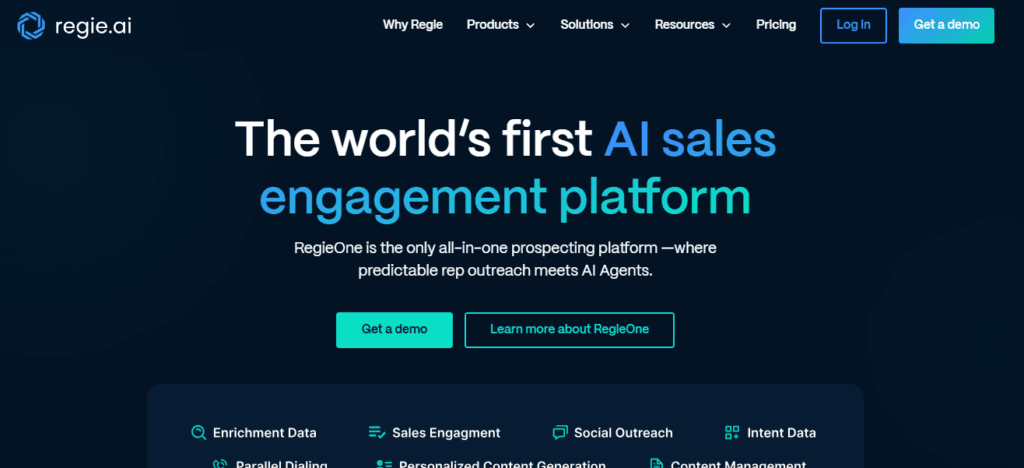
Pricing:
- Custom pricing based on team size and usage.
Ideal Use Case:
- SDRs and AEs building outbound campaigns at scale.
Pros:
- Helps align content with sales strategy.
- Personalizes based on intent signals.
Cons:
- Still evolving in integrations with certain sales tools.
Best Use & How:
- Use Regie.ai to build and optimize sequences that match ICPs and automate follow-ups based on intent data.
10. Crystal
Features:
- Uses DISC personality assessments to predict a prospect’s communication style.
- Provides tailored messaging tips for better rapport.
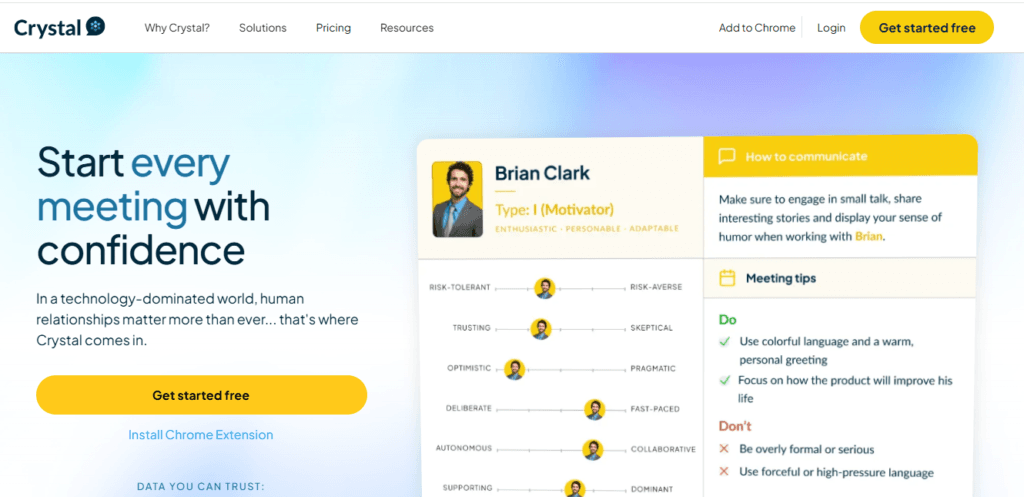
Pricing:
- Free limited version; Pro plans start at $49/month.
Ideal Use Case:
- Sales reps in relationship-based industries like real estate, consulting, or high-ticket SaaS.
Pros:
- Super unique — lets you personalize sales tactics based on personality.
- Works well with LinkedIn profiles.
Cons:
- Not all profiles offer enough data for an accurate reading.
Best Use & How:
- Before calling or emailing a lead, run their LinkedIn through Crystal to shape your tone, structure, and approach.
11. Taplio
Features:
- AI-driven tool to grow personal brands and leads on LinkedIn.
- Suggests content ideas, schedules posts, and analyzes engagement.
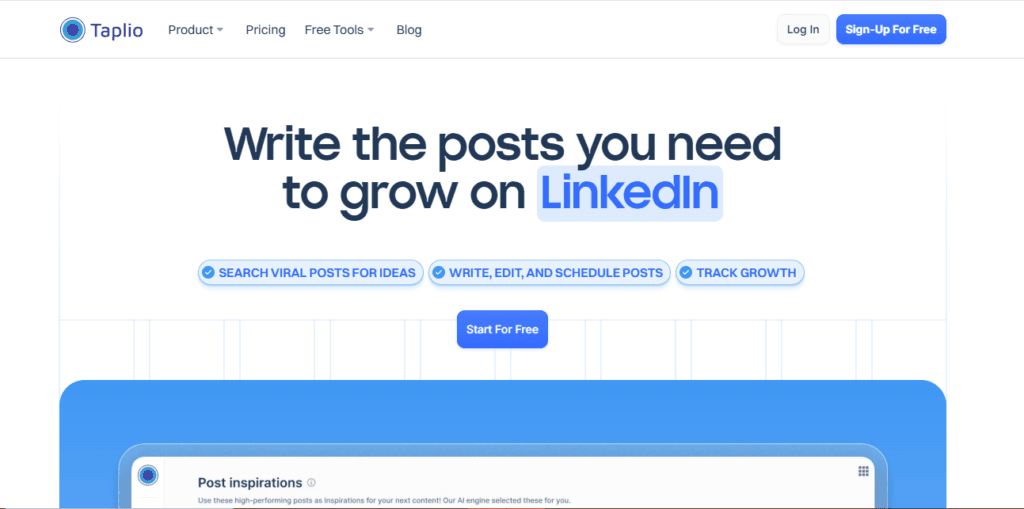
Pricing:
- Starts at $39/month.
Ideal Use Case:
- Founders, salespeople, and personal brands looking to establish authority on LinkedIn.
Pros:
- Combines content creation with growth strategies.
- Helps generate inbound leads organically.
Cons:
- Focused only on LinkedIn; not a multichannel tool.
Best Use & How:
- Use Taplio to create and post thought leadership content consistently while automating lead nurturing via comments and DMs.
12. SetSail
Features:
- AI sales activity tracker that connects rep behaviors to revenue outcomes.
- Offers coaching insights, deal scoring, and custom incentives.
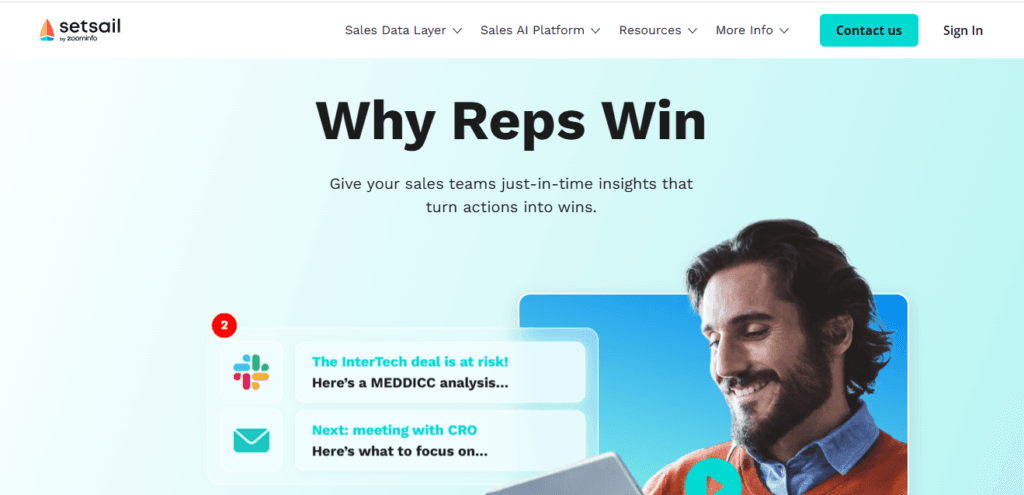
Pricing:
- Custom pricing.
Ideal Use Case:
- Sales leaders and revenue teams wanting insight into what top performers do differently.
Pros:
- Turns activity data into revenue-driving insights.
- Helps scale best practices.
Cons:
- Complex data setup required for full functionality.
Best Use & How:
- Use SetSail to identify and reward behaviors that lead to closed deals — like follow-up frequency or call quality.
13. Tavus
Features:
- AI video personalization at scale.
- Sends tailored video messages with dynamic fields (like name, company) using a single recording.

Pricing:
- Custom pricing.
Ideal Use Case:
- Sales development teams looking to stand out in inboxes with personalized video outreach.
Pros:
- Creates a “wow” factor and boosts reply rates.
- Saves time — one video can become thousands.
Cons:
- Requires webcam-quality and good scriptwriting for best results.
Best Use & How:
- Record a template video, and let Tavus auto-generate personalized versions for your contact list.
14. Lemlist
Features:
- Multichannel outreach (email, LinkedIn, calls) with personalization at scale.
- A/B testing, automation workflows, and warm-up features.
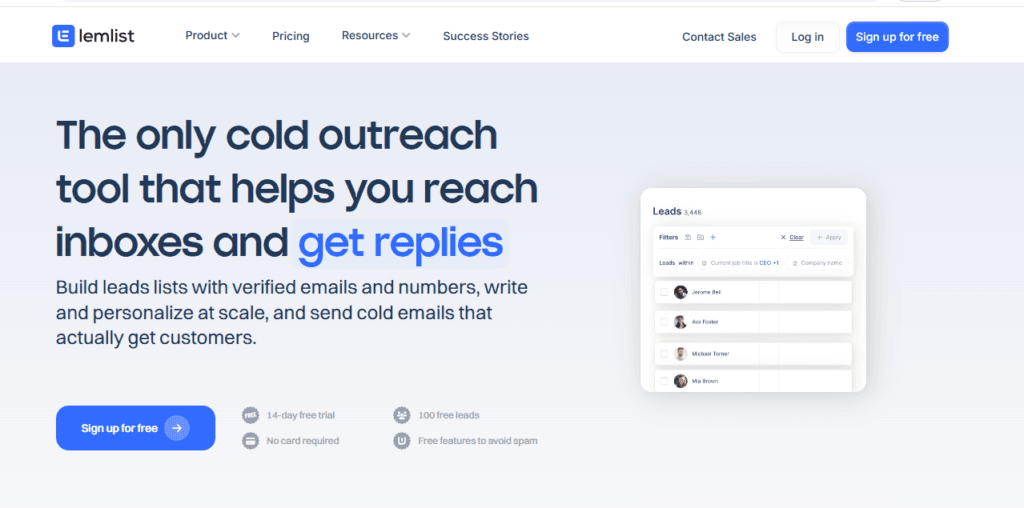
Pricing:
- Starts at $59/month.
Ideal Use Case:
- B2B sales reps running outbound campaigns.
Pros:
- Built-in personalization and warm-up tools.
- Campaign analytics are robust.
Cons:
- Steeper learning curve than simpler email tools.
Best Use & How:
- Use Lemlist for multichannel campaigns that include video, dynamic images, and personalized text — all in one flow.
15. Clay
Features:
- AI data enrichment and personalization tool.
- Connects with 50+ data sources (like LinkedIn, Clearbit) to create hyper-personalized outreach.
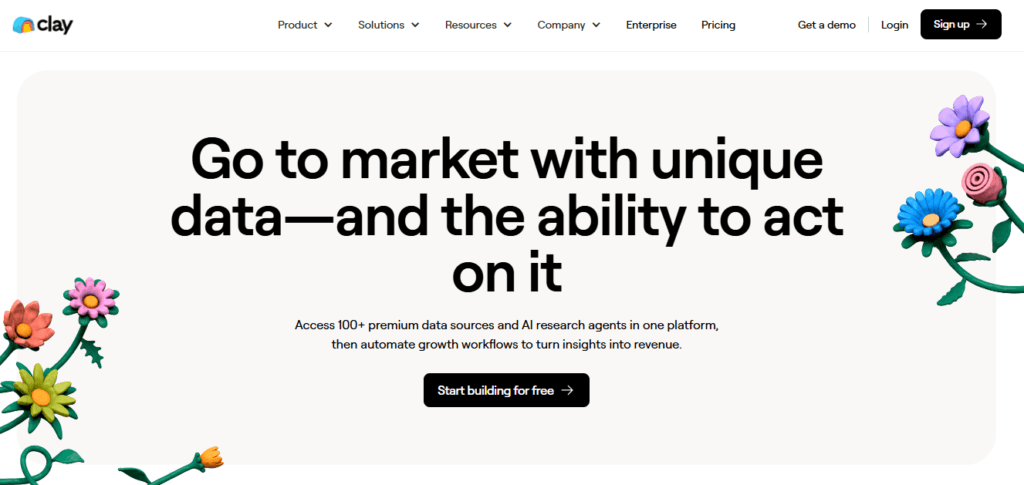
Pricing:
- Custom pricing depending on usage.
Ideal Use Case:
- Teams doing high-volume outreach that still want deep personalization.
Pros:
- Turns raw data into actionable outreach copy.
- Scales personalization with AI.
Cons:
- Requires initial setup to sync data sources.
Best Use & How:
- Use Clay to auto-generate first lines and outreach copy tailored to job titles, companies, recent posts, and more.
16. Humantic.ai
Features:
- Predicts buyer behavior using behavioral science and AI.
- Provides personality intelligence to tailor communication style.
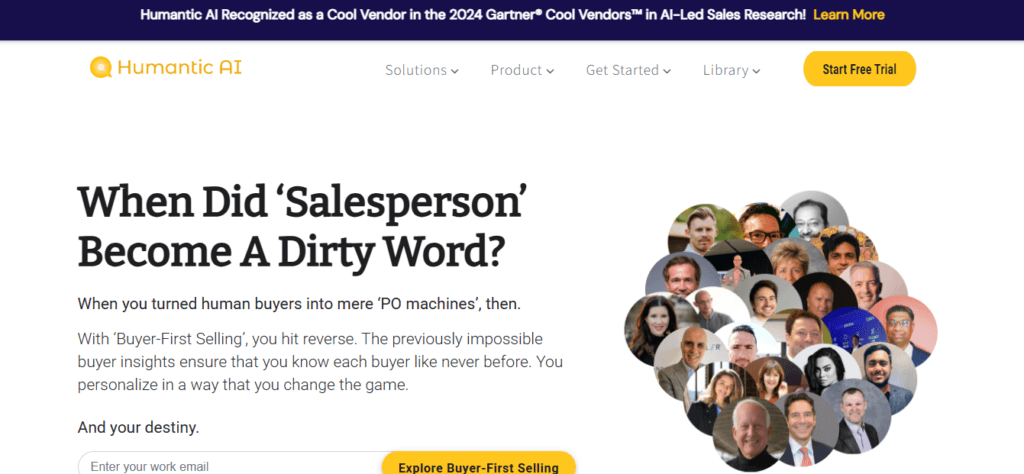
Pricing:
- Starts at $29/month per seat.
Ideal Use Case:
- Sales reps doing account-based selling or high-stakes deals.
Pros:
- Adds psychological depth to targeting.
- Works well with LinkedIn and email tools.
Cons:
- Best used in 1:1, not mass campaigns.
Best Use & How:
- Use Humantic.ai to understand decision-makers’ personalities and adapt language, tone, and pitch accordingly.
Comparison Table for the AI Sales Tools
| Tool | Best For | Key Features | Pricing |
| Lavender | Email optimization | Real-time feedback, email scoring | Free & from $29/mo |
| Copy.ai | Sales & marketing content | AI content generation, templates | Free & from $49/mo |
| Fireflies.ai | Meeting intelligence | Transcription, summaries, CRM sync | Free & from $10/user/mo |
| Regie.ai | Sales sequences | Email campaigns, ICP alignment | Custom |
| Crystal | Personality insights | DISC profiles, messaging tips | Free & from $49/mo |
| Taplio | LinkedIn branding | Content scheduler, analytics | From $39/mo |
| SetSail | Sales activity tracking | Behavior-based insights, incentives | Custom |
| Tavus | Personalized video | Scalable video personalization | Custom |
| Lemlist | Multichannel outreach | Email, LinkedIn, A/B testing | From $59/mo |
| Clay | Hyper-personalized outreach | Data enrichment, AI copy | Custom |
| Humantic.ai | Buyer personality insights | Personality-driven messaging | From $29/mo |
Unique Use Cases and Real-World Applications
Case Study: How Drift Increased Demo Bookings by 30% Using AI Chat
Drift, a conversational marketing platform, implemented AI-driven chatbots to replace static lead capture forms on their website. By engaging visitors in real time with context-aware, natural-sounding dialogue, Drift’s AI chatbot could:
- Qualify leads instantly based on user responses.
- Route hot leads to available sales reps in real time.
- Schedule demos directly within the chat interface.
Result: Drift reported a 30% increase in demo bookings, a significant boost in pipeline velocity, and higher lead engagement. This case demonstrates how conversational AI can turn anonymous traffic into qualified opportunities, fast.
Example: Gong Helping Teams Close 25% More Deals by Analyzing Call Data
Gong.io uses AI to analyze sales conversations across emails, calls, and video meetings. A B2B SaaS company integrated Gong into their sales stack to:
- Record and transcribe calls automatically.
- Identify key moments in conversations—like pricing discussions or objection handling.
- Provide coaching insights on talk-to-listen ratios, deal risks, and competitor mentions.
Result: Sales reps were better prepared, leading to more confident calls and data-backed strategies. Over time, the company observed a 25% increase in closed deals and reduced onboarding time for new reps.
Use Case: HubSpot’s AI Automatically Prioritizing Warm Leads for Sales Reps
HubSpot’s AI-powered lead scoring tool analyzes prospect behavior—such as email opens, site visits, and content downloads—to predict sales-readiness. For a mid-sized marketing agency, this meant:
- Reps no longer wasted time on cold leads.
- Sales outreach focused on prospects showing high buying intent.
- HubSpot automatically surfaced the warmest leads daily.
Result: The sales team saw faster conversions and improved engagement, as outreach became more personalized and well-timed.
Choosing the Right AI Tool for Your Sales Team
Key Factors to Consider
Choosing the ideal AI tool can significantly impact your team’s productivity and ROI. Here are some core elements to evaluate:
- Integration with CRM: Ensure the tool integrates seamlessly with your existing CRM (e.g., Salesforce, HubSpot, Zoho). This prevents data silos and allows AI to work off clean, updated data.
- Team Size and Sales Model: Inside sales teams might benefit more from email automation and call analytics, while field reps may need AI for scheduling and follow-ups.
- Budget and Scalability: Consider whether the tool offers tiered pricing, free trials, and enterprise-level scalability. Factor in hidden costs like onboarding or user seats.
- Data Security & Compliance: For companies in regulated industries (finance, healthcare), ensure the tool is compliant with GDPR, HIPAA, or industry-specific standards.
Tips for Getting Started
Not sure where to begin? Here’s how to get the most out of AI sales tools early on:
- Start with Tools That Offer a Free Trial: Platforms like Gong, Lavender, and Copy.ai offer trials so you can test features without upfront cost.
- Align Tool Selection with KPIs: Choose tools that directly impact your goals—whether that’s reducing sales cycle time, increasing close rates, or scaling outreach.
- Train Teams to Leverage Insights: AI isn’t just automation—it’s a source of data-driven intelligence. Equip your team to use the insights for better conversations, forecasting, and planning.
FAQ’s on AI Sales Tools
What are AI sales tools used for?
They automate and enhance sales tasks like lead qualification, email outreach, pipeline forecasting, and customer insights.
What is the best AI sales tool for small businesses?
HubSpot Sales Hub offers an excellent balance of affordability, features, and ease of use.
Can AI replace human sales reps?
AI enhances human sales reps by automating tasks, not replacing them. Relationship-building still requires a human touch.
Are AI sales tools expensive?
Many tools offer freemium tiers or flexible pricing. It’s scalable—start small and grow.
What are the best free AI sales tools available in 2025?
Several AI sales tools offer free plans or generous trials, especially useful for startups and solo sellers:
- HubSpot Sales Hub (Free Plan): Offers AI email tracking, scheduling, and CRM integration.
- Fireflies.ai: Free tier includes AI meeting transcription and note-taking.
- Lavender: Free version helps you improve cold email performance with real-time suggestions.
- Copy.ai: Offers a free plan for creating sales emails, pitches, and outreach content.
- Clay (Freemium): Automates prospect research and outreach personalization with some free usage.
Which are the best overall AI sales tools in 2025?
These are widely recommended for their AI-driven features and enterprise value:
- Gong.io – Best for conversation intelligence and revenue insights.
- Outreach – Best for AI-powered sales engagement workflows.
- Salesforce Einstein – Best for AI within CRM and sales forecasting.
- Clari – Best for revenue tracking and forecasting.
- Regie.ai – Excellent for personalized sales sequences at scale.
Are there any free AI tools for sales lead generation?
Yes, several tools assist with lead generation using AI:
- Apollo.io (Free tier): AI-enhanced contact database and outreach tools.
- Phantombuster: Free usage allows AI web scraping for leads from platforms like LinkedIn.
- ChatGPT (Free): Use prompts to generate buyer personas, outreach scripts, or lead scoring frameworks.
What are some of the most discussed AI sales tools on Reddit in 2025?
Redditors in r/sales and r/Entrepreneur frequently recommend:
- Lavender – For improving email copy and boosting reply rates.
- Tavus – For AI-generated personalized video messages.
- Taplio – For LinkedIn content and lead nurturing.
- Humantic.ai – For personality-based selling strategies.
- Clay – For hyper-personalized cold outreach workflows.
What are the top AI tools for sales prospecting in 2025?
Here are some tools designed specifically to make prospecting smarter:
- Clay: Automates custom prospecting workflows with AI research.
- Apollo.io: Find verified leads and automate email flows.
- Lusha: Real-time AI-powered contact data with enrichment tools.
- Seamless.ai: AI for finding and verifying B2B contacts in real time.
- Crystal: AI personality profiling to tailor your outreach based on DISC profiles.
What’s the best AI sales assistant software right now?
Top AI sales assistants include:
- Salesforce Einstein: AI embedded within CRM for predictions, next-best actions, and insights.
- My AI Front Desk: Handles customer calls and appointment scheduling automatically.
- Drift AI Chat: Qualifies leads in real time via chatbot and books meetings directly.
- Conversica: Automates follow-ups and lead nurturing via intelligent virtual assistants.
Which AI tools help improve sales emails and outreach?
- Lavender: Live email feedback and scoring to boost open/reply rates.
- Copy.ai / Jasper.ai: Generate email templates and subject lines.
- Regie.ai: AI content generator for cold emails, sequences, and scripts.
What are some new AI sales tools that are actually useful in 2025?
Here are newer, buzz-worthy tools making a splash:
- Tavus: Create personalized videos at scale using your AI-generated voice and face.
- SetSail: Tracks rep behaviors and correlates them with closed deals.
- Humantic.ai: Offers psychographic data to tailor communication styles.
- Taplio: Combines AI content and analytics to help build LinkedIn presence.
What is the best AI tool for sales?
Gong.io is widely considered the best AI tool for sales due to its conversation intelligence, call analytics, and revenue insights. Other top contenders include Salesforce Einstein, Outreach, and Lavender for specific tasks like CRM, engagement, and email optimization.
How AI can be used in sales?
AI is used in sales to automate lead scoring, personalize outreach, analyze customer behavior, forecast sales, manage pipelines, schedule meetings, and even coach sales reps using call analysis.
Can AI really help you sell?
Yes, AI helps boost sales by increasing efficiency, improving targeting, optimizing messaging, and providing real-time insights that lead to better decision-making and higher conversion rates.
Can AI make sales calls?
Yes, AI-powered voice assistants and conversational bots can make basic sales or follow-up calls, qualify leads, and book appointments. Tools like My AI Front Desk and Conversica are designed for this.
Is AI cold calling illegal?
AI cold calling is legal as long as it complies with telemarketing laws like the TCPA in the U.S. This means getting consent where necessary and providing opt-out options. However, regulations may vary by country.
Will AI replace salespeople?
AI will not fully replace salespeople but will augment their roles by handling repetitive tasks, providing insights, and enabling smarter selling. Human interaction remains vital for complex deals and relationship-building.
What jobs cannot be replaced by AI?
Jobs requiring emotional intelligence, creativity, strategic thinking, and deep human interaction—such as therapists, teachers, leaders, and artists—are difficult to replace with AI.
Will telemarketers be replaced by AI?
Yes, telemarketing is one of the jobs most likely to be replaced by AI due to the repetitive and script-based nature of the work. AI can handle calls at scale with personalized scripts.
What jobs will AI soon replace?
Jobs in data entry, basic customer service, telemarketing, simple bookkeeping, and routine logistics coordination are at high risk of being automated in the near future.
What jobs will be gone by 2030?
By 2030, many roles in manufacturing, retail cashiering, telemarketing, data processing, and routine clerical work may disappear or drastically shrink due to automation and AI.
What jobs are irreplaceable by AI?
Jobs involving creativity (writers, designers), human care (nurses, counselors), strategic decision-making (executives), and skilled trades (plumbers, electricians) are considered irreplaceable by AI in the near future.
Where will AI be in 10 years?
In 10 years, AI will be deeply integrated into daily life and work, powering autonomous systems, personalized healthcare, real-time education, and predictive analytics across industries. Regulation and ethical use will be major themes.
Who is the father of AI?
John McCarthy is known as the “father of AI.” He coined the term “artificial intelligence” in 1956 and played a key role in its early development.
What is the next big thing after AI?
Quantum computing, brain-computer interfaces, and artificial general intelligence (AGI) are considered potential “next big things” after AI, with massive implications for computing and problem-solving.
How to make money off of AI?
You can make money from AI by creating SaaS AI tools, offering AI consulting services, investing in AI startups or stocks, developing AI-powered content, or using AI to improve business efficiency and sales.
Conclusion
AI sales tools boost performance through automation, analytics, and smart outreach. Tools like Gong, Drift, and HubSpot lead the way in 2025. Choosing the right tool depends on your goals, team size, and tech stack.
Don’t let your competitors outsmart you with AI. Start exploring the best AI sales tools today and give your team the edge they need to win more deals.